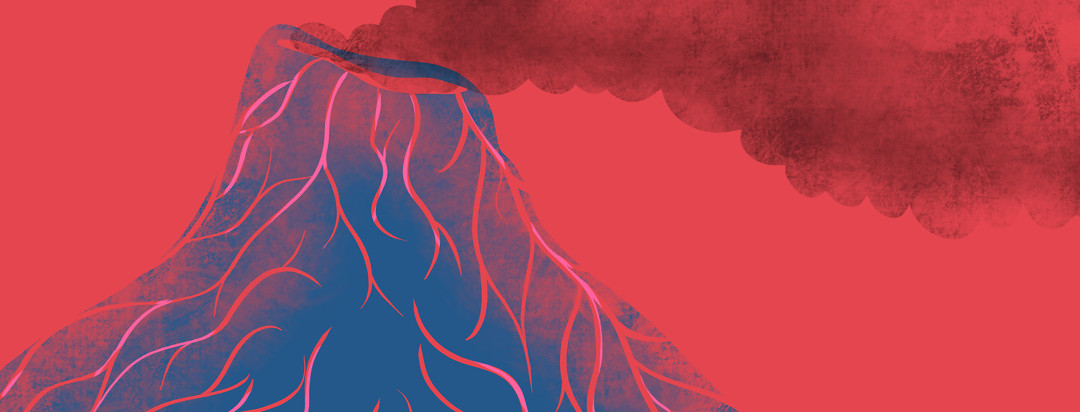Adding Injury to AxSpA Pain: Thinking About Acute vs. Chronic Pain
Most of the pain I feel these days--well, for the past two decades--is chronic pain related to AxSpA. As I’ve previously mentioned, pain is difficult to describe and I struggle to put my pain into words. In some ways, acute pain seems easier to describe simply because it’s often (not always) linked to a specific event, whether that be a sports injury, a medical procedure, or a fall on a hard surface.
I recently did the latter. One evening, a day after a storm dropped several inches of snow which partially melted and then froze over, I went out to clean off my car. I navigated the slick pavement well as I made my way to and around the vehicle. But then, as I tried to reach the roof around the back end of my sports utility, my feet were swept out from under me and I came down on a section of thick black ice--hard.
It all happened so fast. I picked myself up off the ice, my jeans soaking wet on one side, and tried to assess the damage. But I had trouble thinking for a few moments, the pain in my left knee so intense that I felt like I could hurl. My knee was throbbing, the index finger on my left hand pulsated with a pins-and-needles-type pain, and my right shoulder ached as if I had tore a muscle.
The causes and effects of pain
The pain in my knee, finger, and shoulder helped me piece together the story of my fall. The welt and contusion on my knee show that’s where I hit the ground first. Judging from the pain and swelling in my finger, I’d say the force of my fall overextended it backward.
This incident got me wondering how this acute pain is different from the chronic pain I feel every day of my life from axial spondyloarthritis. My fall cued me into one nuanced difference between chronic and acute pain--that acute pain is typically the effect of something specific in time and space, whereas chronic pain is both an effect and often a cause.
What do I mean when I say that chronic pain is both an effect and a cause? Well, I know my chronic pain is an effect of a malfunctioning immune system and inflammatory response, which in my case is clinically referred to as ankylosing spondylitis. But chronic pain also causes (or contributes to) other issues, such as fatigue, physical and mental exhaustion, changes in appetite, anxiety, depression, and a host of other complications.
Differences in how pain feels
While I’m comparing my experience with chronic and acute pain, I want to make it clear that all pain is experienced, valid, and worthy of attention and care. I whole-heartedly condemn any attempts to invalidate another’s experience of pain, to rank pain as better or worse, or to use one’s chronic pain as an excuse to dismiss another’s acute pain. That’s not my intent here.
With that said, I think chronic and acute pain just feel different. When I experience acute pain, such as the pain in my finger from the fall, that pain is intense upon injury, slowly fades away over time as it heals, but increases momentarily during the healing process when I accidentally put pressure on the affected area.
Chronic pain can fluctuate between intense and subtle, sharp and dull. For me, it’s often a persistent ache. Chronic pain can also be aggravated by activity. When I cut vegetables and meats while preparing meals, the pain and swelling in the knuckles in my right hand amps up. When I hike, my hip pain gradually increases even long after I’ve returned to my couch, continually announcing its presence with a deep, burning sensation. But chronic pain can also just be there, nagging at me from my lower back or hips or feet, for no apparent reason.
Chronic pain can be overwhelming
In my experience, chronic pain can also overwhelm the entire body. When I’m in the midst of a bad flare, I often can’t tell where the pain begins or ends. Maybe the pain began in my lower back, as it always has, but during a flare I feel like my entire body has been plunged into a pool full of pain. I am engulfed in it. Nothing I do offers relief. At that point, it’s simply a waiting game.
Acute pain can certainly be overwhelming too, but tends to be more localized. Even so, it still has the potential to monopolize one’s thoughts and attention.
None of this is new to those of us who experience chronic pain daily and acute pain occasionally. But I think it’s hard for others to understand the nature of chronic pain--that is, others who do not battle chronic pain on a daily basis.
And that’s okay. Chronic pain is difficult to explain. What I do hope, however, is that we all make an honest attempt to listen to our friends and family members when they describe their pain, that we believe those descriptions, and that we try to understand.

Join the conversation